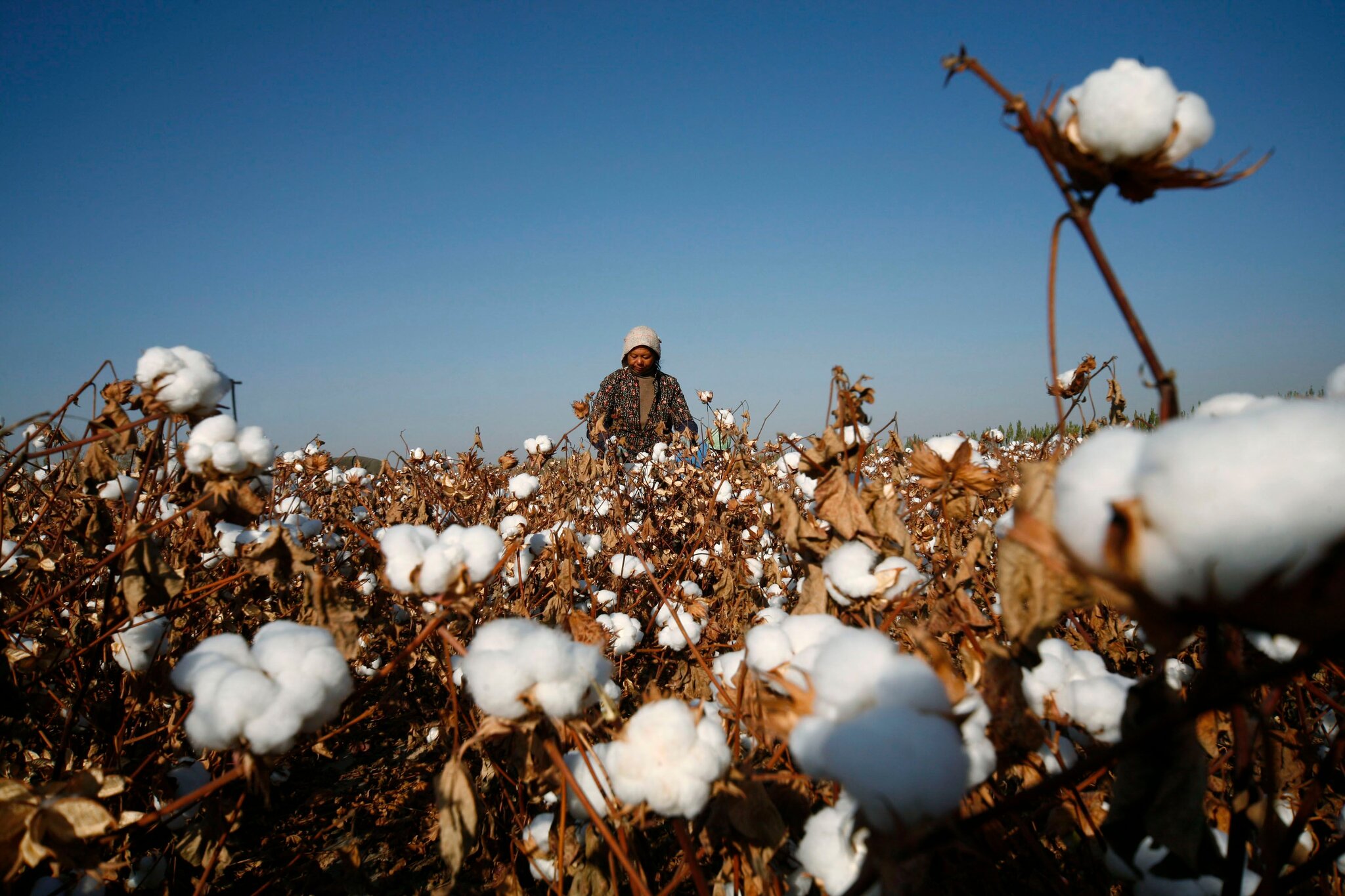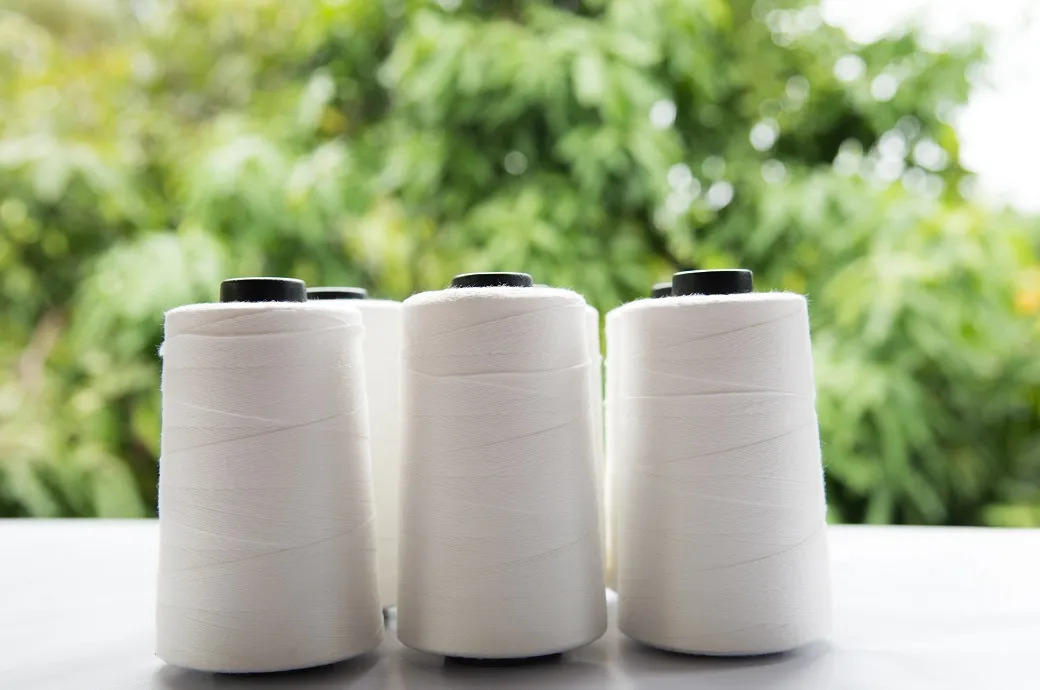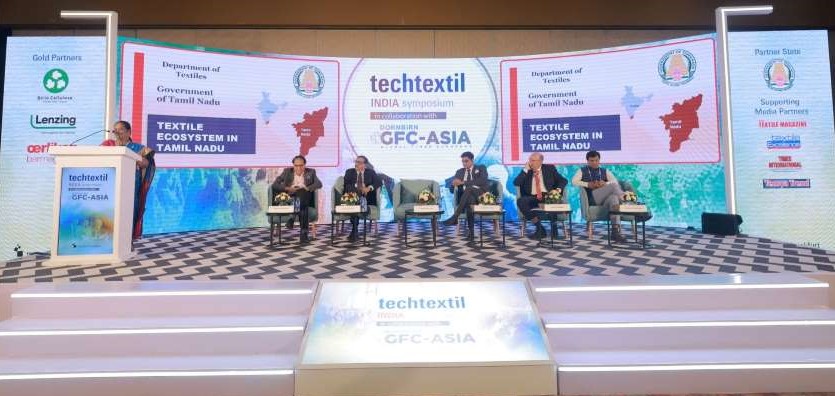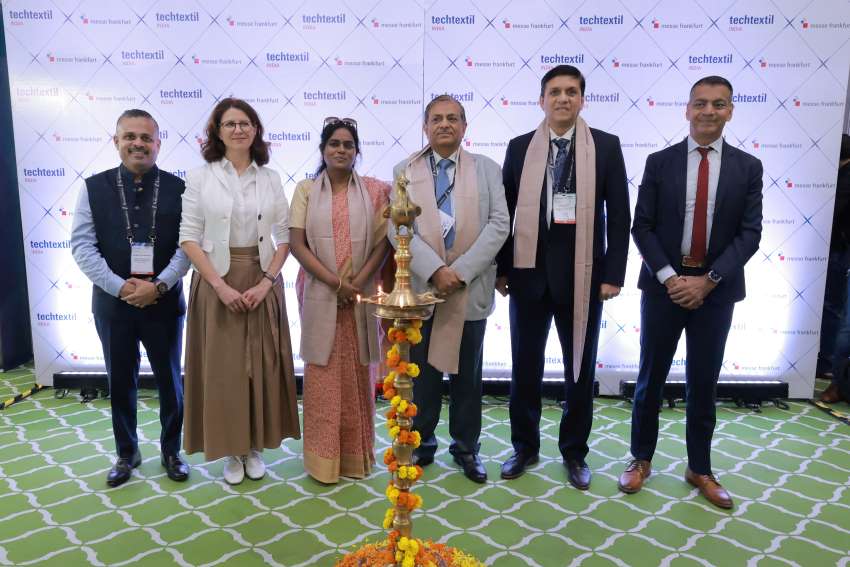FW
Pakistan’s export of cotton products have decreased during the last three years. The reasons include inconsistency in yield of cotton crop, rising cost of business, shrinking global demand and decrease in cotton prices in the market. The country exported cotton products worth $11 billion during 2015-16. These comprise raw cotton, cotton yarn, cotton cloth, cotton carded or combed, knitwear, bed wear, towels, tents, canvas and tarpaulin and readymade garments.
Steps have been taken to enhance exports of cotton products. Electricity tariff has been reduced for industrial units in order to reduce the cost of doing business. The export sector is getting easy finance. Discount rate, which currently stands at six per cent has been reduced. The export finance rate currently at 3.5 per cent is the lowest in a decade especially for the textile sector.
Under the textile policy 2015-19, an amount of Rs 64.15 billion would be spent on the textile sector to double the exports of textiles and clothing from the existing 13 billion dollars to 26 billion dollars by the year 2019. Pakistan is the fourth largest producer of cotton in the world and holds the third largest spinning capacity in Asia after China and India.
This week leading experts in the textile industry are exhibiting their latest products and innovations at the 46th edition of the Filo Milan trade fair for yarns and fabrics which is taking place at the Palazzo delle Stelline. The venue has Monocel, a designer and distributor of high-end top dyed yarns under the Monocel brand demonstrating its potential and how it can represent the next generation of smart cellulosic yarns. The company is exhibiting its Monocel yarns in a range of jersey and woven fabric innovations.
Monocel is a new generation of smart and responsible lyocell-from-bamboo yarns. These developments represent a new option in eco-responsible yarns, with a unique colour range delivered through an Ultrasonic Natural Plant Dyed process, the company reports.
Monocel Ultrasonic Plant Dyed yarns is a family of high tech top dyed yarns. It combine the latest advanced dyeing technology with ancient coloration materials. The company says it believes it is one of the most advanced water saving techniques available. The patented process uses liquid plant dyes in the new ultrasonic ‘attachment’ technique for a high level of colour fastness, with encouraging improved efficiencies in energy and emissions reductions through lower temperatures and shorter dyeing times.
By combining Monocel with natural plant dyes, the company has achieved a beautiful colour range that is unique to the ultrasonic process and offers yarns that are completely non-toxic and gentle to the skin. The dyes are based on traditional Asian medicinal roots, fruits and flowers.
Yarns come in pure Monocel or blended with GOTS certified organic cotton, spun in Siro-Compact, and Compact formats for the finest yarns. White bleached yarns use the more environmental Hydrogen Peroxide (H2O2) process.
Marchi & Fildi, a leading spinner and provider of cotton based yarns for the textile industry, is presenting its Ecotec yarn, made in Italy and produced by an exclusive traceable and certified production process that transforms pre-dyed textile clippings into a 100% cotton yarn with record savings in water and energy consumption, according to the manufacturer.
According to the company, Ecotec is the new generation of smart cotton. Thanks to the exclusive Marchi & Fildi process, the redundant remnants from the fashion system’s garment production are recovered and transformed into Ecotec yarns, amking it possible to use less resources while maintaining the quality standards.
Some companies decided to become Ecotec accredited partners by signing the Ecotec policy that makes them active part of the Ecotec marketing and communication activities. These include Euromaglia S.r.l, Lana Reale, Manifattura CBM, Tessuti & Tessuti srl, Tintex Texteis Sa, Karalis Sa.
Ecotec is a refined and versatile yarn that is suitable for woven and jersey fashion fabrics as well as for knitwear and hosiery. This year Ecotec by Marchi & Fildi is presenting two product lines at the Fair including Ecotec Innovation, a line of smart solutions created by the R&D department of Marchi & Fildi, in cooperation with a textile style office; and Ecotec Collection, an exclusive range of Ecotec fabrics made by accredited Ecotec partners.
Nandan Denim plans to raise Rs 100 crores through a warrants issue to foreign investors to fund its expansion. Apart from expansion, the funds will also be used for investment in proposed subsidiaries, meeting long-term working capital requirements and improving the capital structure. Nandan’s existing portfolio of investors are: LTS Investment Fund and LGOF Global Opportunities, will be investing. The company will be issuing 25 lakh warrants to them.
The company is planning to issue 50 lakh convertible warrants on a preferential basis to foreign investors at Rs 200 each including a premium of Rs 190. Ahmedabad-based Nandan Denim expanded its capacity from six million meters per annum to 110 million meters per annum over the last 12 years. The company, a fabric maker, is part of the diversified conglomerate Chiripal Group, which was established in 1972. The group is engaged in businesses including textiles, chemicals, packaging, infrastructure and education. Over the years, the magnitude of the operations of the company has increased manifold.
Nandan Denim’s revenue increased to Rs 300.50 crores in the quarter ended June 30 against Rs 280.51 crores in the same period last year. Its net profit rose marginally to Rs 15.97 crores in the last quarter from Rs 15.61 crores in the year-ago period.
The Los Angeles International Textile Show that ran from September 26 to 28 at the California Market Center drew diverse crowd. Among the attendees were representatives from Karen Kane, Trina Turk, Joie, Halston, BCBG, Bailey44, Black Halo, Guess, Calvin Rucker, Current/Elliot, David Meister, Alo Yoga among others. Besides local attendees, visitors from as far as New York and Canada were also part of the show.
This was the first time in several years that Tricot Liesse was at the show. The Montreal-based company makes high-end knits for upscale brands including many in the swimsuit market. Designer Nathalie Camier says the company recently hired a new Los Angeles–based sales representative Leslie B. Lesh and came to the conclusion that it was a good time to return to the textile show. He said sourcing fabrics from Montreal could be a good fit for U.S. companies looking for faster deliveries than China.
At the Buhler Quality Yarns booth, Victor Almeida, textile engineer and P.J. McCord, director of sales for the Americas were fielding a lot of questions about the Jefferson, Ga.–based yarn spinner’s products. Buhler produces higher-end yarns made from premium fibers such as Supima, Tencel and Micro Modal.
Following talks of withdrawal of the Most Favoured Nation (MFN) status to its neighbor, India is likely to stop $782-million worth of cotton exports to Pakistan with exporters keen to divert shipment to other cotton scarce countries. Way back in 1996, India had granted MFN status to Pakistan to enhance trade between the two nuclear neighbours which Pakistan never reciprocated.
A meeting, chaired by Prime Minister Narendra Modi, was scheduled to be held on Thursday in New Delhi to reconsider MFN status that Pakistan enjoys for around 20 years. But the meeting got postponed and is now rescheduled for next week. According to trade sources, India exported around two million bales of cotton to Pakistan in 2015-16. This constituted over 10 per cent of overall exports of the natural fibre from India. Pakistan’s cotton imports from India jumped sharply in 2015-16 due to crop failure there.
While cotton exports from India attract zero duty due to surplus availability of the natural fibre in Pakistan but India’s neighbouring country gets a favourable treatment under the MFN status to which Indian exporters prioritise shipment. However, with India most likely to withdraw MFN status to Pakistan, Indian cotton exporters are readying to divert their cotton shipment to other countries including Bangladesh, China, Taiwan among others.
Going a step further, Indian cotton traders have decided not to participate in the 75th plenary meeting of International Cotton Advisory Committee (ICAC). The meeting is scheduled to be held from October 30 to November 4 in Islamabad.
India and China, the two most populated countries in the world, would turn out to be the most coveted markets by 2030, says a study. As the current global economic trend moves towards the next decade, it is becoming clear that the US would be replaced by China as the world’s biggest apparel market while India will not be far behind. An in depth analysis of both China and India reveals that consumer’s changing perception and increasing awareness for sustainable fashion and natural fibres is the cause of the progress made by the two countries.
According to a study by Fung Global Retail & Technology, consumer spending trend remains high for kids’ wear and casual wear categories. On the other hand, recent reports by Nielsen Global Survey of Consumer Confidence showed India’s confidence is up three points from the previous quarter. China’s positive economic outlook might result from its ‘One Belt, One Road’ initiative, an economic and diplomatic programe that calls for major investment in the region’s trade routes. In a recent McKinsey podcast, senior partner Kevin Sneader explained that there were two parts to this: the belt and the road. While the belt is the physical road which takes one from Zurich all the way through Europe to somewhere up north in Scandinavia, the road is actually the maritime Silk Road which in other words are shipping lanes essentially from Zurich to Venice.
Therefore it’s very ambitious, covering about 65 per cent of the world’s population, about one-third of the world’s GDP and about a quarter of all the goods and services the world moves. The $100 billion initiative would help fuel growth for China after its economy has seen a period of slowing down.
On the other hand, India witnessed significant growth in organised retail driven by increasing consumer preference for specialty, department and hypermarkets and increasing lifestyle spend. Over the last decade, almost all global brands have made a beeline for India market changing the retail landscape of the country. An Indian Consumer survey ‘Fully’, 73 per cent say that they could spend the rest of their life in the fibre.
German scientists have developed a textile finish that provides a sensory cooling effect. The textile finish is based on p-menthane derivatives (agonists) such as WS-3 (N-ethyl-p-menthane-3-carboxamide) or L-menthyl lactate and icilin. These substances have the advantage when spread in low concentrations on small areas of the body, they have a lasting and mild cooling effect.
Sensory cooling is the term used to describe a chemically induced sensation of coolness on the skin, due to the triggering of cold receptors at the nerve ends close to the surface of the skin. This is different from the cooling effect normally achieved by physical processes where the skin is cooled mainly by the evaporation of water.
Unlike conventional cooling methods, cold-inducing substances that result in sensory cooling have a mild cooling effect, even when spread over a large area, without over-cooling the skin. One example of this would be the peppermint substance menthol. This has a cooling effect and soothes itching.
Sensory cooling textiles are effective in textiles worn close to the skin, but are unsuitable for loosely cut clothing that is not in direct contact with the body. The sensory perception of cold depends not only on the area of the skin being treated but also on a range of other parameters such as the moisture level in the skin and the topography of the skin surface.
Weavers in a remote village in North Dinajpur district of West Bengal have been stitching Banarasi-style carpets for around three decades, but with little recognition. Only recently, the West Bengal Directorate of Textiles decided to set up a mega carpet cluster at Malgaon village in Kaliaganj block where hand-woven carpets are being made since the middle of 1980s. As of now, around 300 women weave carpets in the village as members of Malgaon Handloom Cluster Development Society, formed in 2009.
The society's president Siddique Hossain says five European experts were recently brought to Malgaon by a Kolkata-based export organisation and they were highly impressed with the quality of carpets weaved there. It was the effort of Abu Taher, a resident of Malgaon who took interest in carpet weaving during a visit to Varanasi in 1978 and brought the technical knowledge back to his village. By 1985-86, he passed on the acquired knowledge to the children of Malgaon, though there was hardly any market for these carpets in the area.
Later in 2009, women of self-help groups were trained in the art and Malgaon Handloom Cluster Development Society was formed. The District Industries Centre now makes arrangements to send these carpets to various handicraft fairs across the country fetching modest income for the weavers sometimes.
In a move that failed to satisfy either the garment workers’ unions or the manufacturers, the Cambodian government has agreed to raise the minimum wage for clothing and footwear workers by about 9 per cent. Just yesterday, the ministry of labour, vocational and training announced that the minimum wage for the crucial sector of Cambodia’s economy would rise to $153 per month beginning next year. Currently the minimum wage of workers is $140.
While the increase falls short of the $171-a-month wage proposal pushed by the unions, the Garment Manufacturers Association in Cambodia (GMAC) fears that the increase is high and will damage the country’s ability to compete with other lower-wage countries. As a matter of fact, the manufactures wanted wages of $147-per-month.
While the GMAC says that increase is on the higher side, the President of the Coalition of Cambodian Apparel Workers Democratic Unions (C.CAWDU), Ath Thon said that they will stick to their $171-per-month demand. Wages in Cambodia remain low by international standards, largely because of pressures to compete with other low-cost production centers such as Bangladesh and Vietnam.
In 2015, the Southeast Asian country shipped nearly $7 billion worth of products to the United States and Europe.
Two computer engineers from Bangladesh have developed a microcomputer-embedded jacket. The idea is to better connect all devices and outsource the computing power and storage to cloud jacket, meaning individual devices can be dumber and therefore less expensive. The cloud and the dump terminal devices can communicate with each other over Bluetooth and Wi-Fi network connectivity.
Users can create a hyper-cloud, a much more powerful engine by connecting seven to ten people together wearing such a cloud jacket. The jacket can also act as a micro or picocell tower. All of its capabilities can be shared on a private network with other devices via Wi-Fi or Bluetooth.
The wearable cloud can act as an application platform, so instead of modifying or having to upgrade the hardware, this wearable model provides a platform, and developers can build anything on top of it. This wearable cloud concept differs from existing smart clothing solutions in that they only act as input devices.
Current products such as the Levi’s smart jacket allow a user to make hand gestures on the jacket to answer a phone call or shuffle through a playlist. Cloud computing is a system where the hardware and software are accessible over the internet seamlessly from a remote location.












